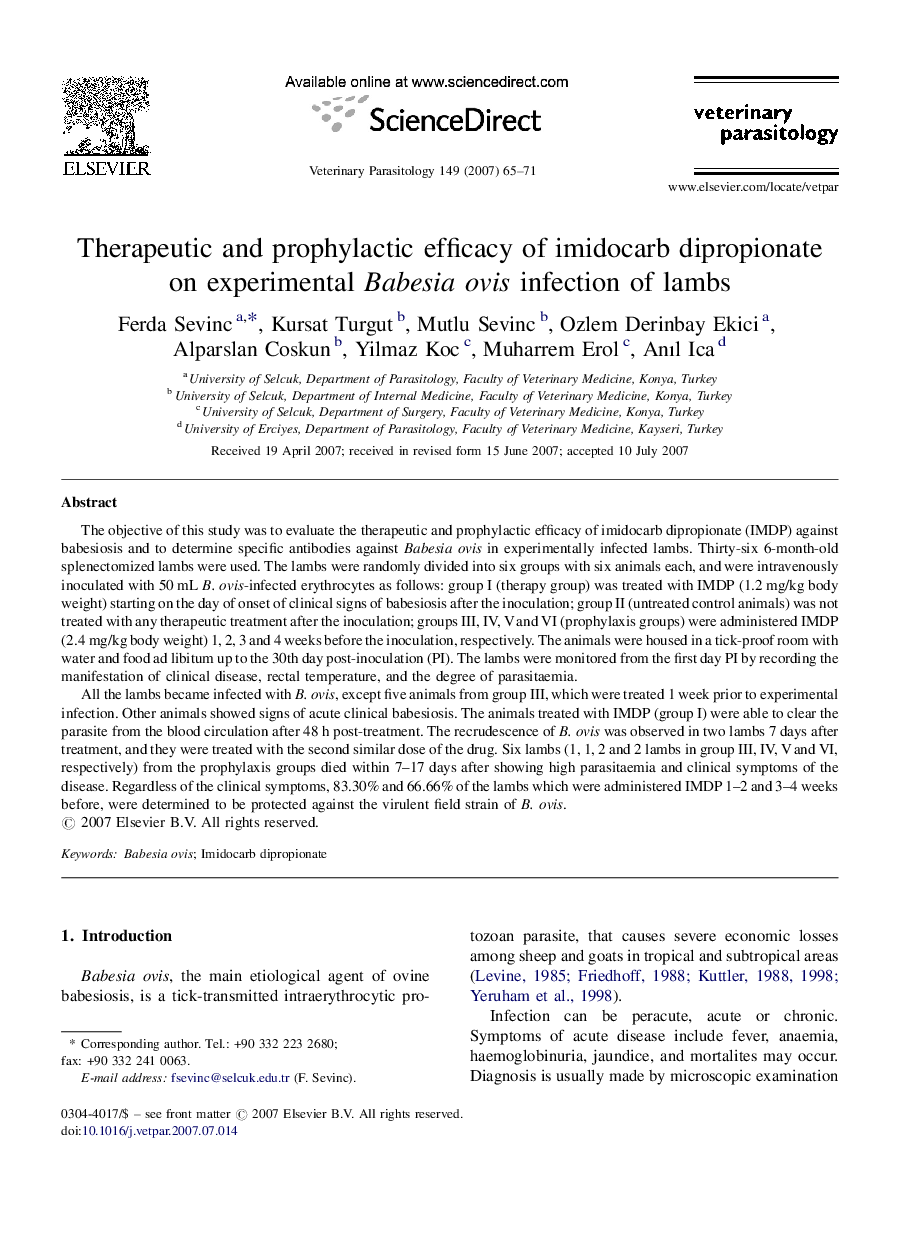| Article ID | Journal | Published Year | Pages | File Type |
|---|---|---|---|---|
| 2471819 | Veterinary Parasitology | 2007 | 7 Pages |
The objective of this study was to evaluate the therapeutic and prophylactic efficacy of imidocarb dipropionate (IMDP) against babesiosis and to determine specific antibodies against Babesia ovis in experimentally infected lambs. Thirty-six 6-month-old splenectomized lambs were used. The lambs were randomly divided into six groups with six animals each, and were intravenously inoculated with 50 mL B. ovis-infected erythrocytes as follows: group I (therapy group) was treated with IMDP (1.2 mg/kg body weight) starting on the day of onset of clinical signs of babesiosis after the inoculation; group II (untreated control animals) was not treated with any therapeutic treatment after the inoculation; groups III, IV, V and VI (prophylaxis groups) were administered IMDP (2.4 mg/kg body weight) 1, 2, 3 and 4 weeks before the inoculation, respectively. The animals were housed in a tick-proof room with water and food ad libitum up to the 30th day post-inoculation (PI). The lambs were monitored from the first day PI by recording the manifestation of clinical disease, rectal temperature, and the degree of parasitaemia.All the lambs became infected with B. ovis, except five animals from group III, which were treated 1 week prior to experimental infection. Other animals showed signs of acute clinical babesiosis. The animals treated with IMDP (group I) were able to clear the parasite from the blood circulation after 48 h post-treatment. The recrudescence of B. ovis was observed in two lambs 7 days after treatment, and they were treated with the second similar dose of the drug. Six lambs (1, 1, 2 and 2 lambs in group III, IV, V and VI, respectively) from the prophylaxis groups died within 7–17 days after showing high parasitaemia and clinical symptoms of the disease. Regardless of the clinical symptoms, 83.30% and 66.66% of the lambs which were administered IMDP 1–2 and 3–4 weeks before, were determined to be protected against the virulent field strain of B. ovis.
